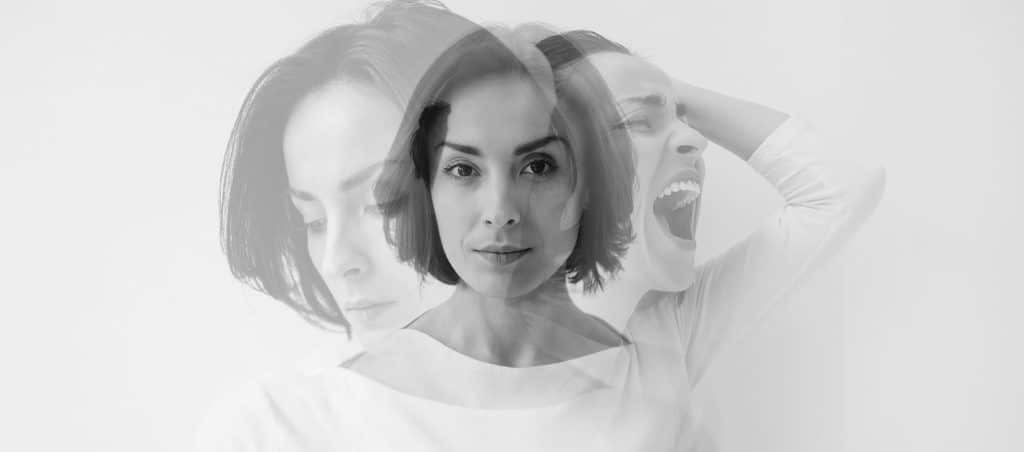In recent years, the conversation about mental health has come more out into the open. Because of that, more and more people are using mental health terminology today, and if they aren’t fully informed, that can sometimes cause some confusion.
Two disorders that are often mistaken for each other are borderline personality disorder (BPD) and bipolar disorder. If you are concerned that you or someone you care about may be dealing with one of these conditions, it’s important to know the difference to understand how treatment may work.
What are BPD and Bipolar Disorder?
BPD and bipolar disorder are often mistaken for one another because they have some similar impacts on moods and behaviors. There may be further confusion because “BPD” could work as an abbreviation for either one.

Despite the behavioral and written similarities, these two conditions are very different in some important ways. If not correctly diagnosed, you or your loved one may not choose the best treatment provider and could see disappointing outcomes.
Table of Contents
- Understanding Borderline Personality Disorder (BPD)
- Understanding Bipolar Disorder
- Key Differences Between BPD and Bipolar Disorder
- Challenges in Diagnosis
- Treatment Options at Illinois Recovery Center
- Living with BPD vs. Bipolar Disorder
- When Professional Help is Necessary
- Getting Help and Hope at Illinois Recovery Center
Understanding Borderline Personality Disorder (BPD)
The distinguishing characteristic of BPD is dramatic mood swings on very short intervals as part of an overall struggle to control thoughts and feelings. BPD can cause impulsive actions such as substance abuse or reckless spending. It can involve self-harm like cutting or even suicidal behavior. BPD can cause paranoia or excessive fear of abandonment. You may struggle to maintain relationships and have low self-esteem.
BPD changes are often triggered by difficulties interacting with other people. It sometimes has its roots in childhood trauma, and it may manifest itself with addictions, anxiety, and body dysmorphia (which can lead to bulimia or anorexia).
Not surprisingly, BPD can make it nearly impossible to sustain positive relationships. It can also make it difficult to maintain employment or manage personal finances. Others may view someone with BPD as reckless or unpredictable, and this perception can trigger more shifts in BPD behaviors.
Understanding Bipolar Disorder
Bipolar disorder can sometimes be mistaken for borderline personality disorder (BPD) due to overlapping symptoms. However, key distinctions exist. Bipolar disorder involves longer periods of extreme moods, lasting days, weeks, or even months, before a shift occurs. Unlike BPD, these mood swings aren’t triggered by external events. Bipolar disorder also involves inherent changes in sleep, thinking, speech, and energy levels that accompany each mood reversal.
Manic episodes are characterized by amplified happiness or anger, unusually high mental and physical energy, and increased physical activity. Risky behaviors, such as impulsive spending or sexual activity, may occur, and judgment can be impaired. Individuals in a manic phase often sleep less without feeling tired and may develop elaborate plans for travel, work, or recreation.
The depressive phase presents a stark contrast. The excitable, energetic mood shifts to lethargy. Low energy levels may be coupled with an inability to rest. Concentration and decision-making become impaired, and interest in previously enjoyed activities may wane. Feelings of guilt, hopelessness, or even suicidal ideation may arise.
Bipolar disorder encompasses several types. Bipolar I disorder is characterized by manic episodes lasting at least a week or severe enough to require hospitalization. Bipolar II disorder, in contrast, does not involve full-blown manic episodes. While Bipolar I disorder can include delusions or hallucinations, Bipolar II disorder does not. Bipolar I disorder often has a greater impact on daily life and may necessitate hospitalization. The older term for bipolar disorder was manic-depressive illness.
Cyclothymic disorder is another related condition. It can cause emotional extremes similar to bipolar disorder, but less severe. Cyclothymic disorder is not always active, with periods of normal mood between episodes. It’s important to seek treatment for cyclothymia, as it can sometimes develop into Bipolar I or Bipolar II disorder.

Key Differences Between BPD and Bipolar Disorder
Now that we’ve laid out the characteristics of both disorders, we can see how they are different. BPD involves rapid emotional changes brought on by external events, while bipolar disorder involves much longer defined periods of time at each extreme of the emotional spectrum.
Impulsive behavior is more pronounced with BPD, and this impulsivity can even be self-destructive. There is also a greater impact on relationships due to the heightened fear of abandonment that BPD brings. Bipolar disorder does not have as serious an impact on relationships except during the extremes of a mood episode.
Not surprisingly, there are differences in how you or your loved one will be treated depending on whether the issue is BPD or bipolar disorder. Most work for BPD patients is down through psychotherapy, specifically with a treatment method called dialectical behavior therapy (DBT). On the other hand, bipolar is managed with a combination of psychotherapy and medications, including mood stabilizers.
Challenges in Diagnosis
With so much overlap in symptoms and so much confusion about which condition is which, it’s very important to have a qualified psychological professional complete a thorough evaluation for a proper diagnosis.
BPD and bipolar disorder have so many shared characteristics that it can be very easy to misdiagnose, and that’s why Illinois Recovery Center can be such an important partner for you or your loved one. Our team is thoroughly trained and very experienced in identifying which behaviors and feelings are in play, and what that means for a diagnosis and subsequent treatment.
We utilized specialized assessment tools that give us a high probability of making an accurate determination of exactly which condition is in play so that you can have confidence in the course we help plot for you.
Treatment Options at Illinois Recovery Center
It may seem like diagnosing and dealing with BPD and bipolar disorder is very complex, but the great news is that there are some excellent treatment options that can provide real hope for a well-adjusted life. Here at Illinois Recovery Center, we offer a wide array of mental healthcare options that give us the flexibility to find the ideal course for you or your loved one.
Our team offers two primary psychotherapy approaches. The first is dialectical behavior therapy, or DBT. This technique helps with emotional regulation for management of BPD. The other technique is cognitive behavioral therapy (CBT), which helps manage thought patterns and can treat both BPD and bipolar disorder.
Not surprisingly, medication is a key tool here. We prescribe mood stabilizers for bipolar disorder, using pharmaceuticals like lithium and anticonvulsants to manage swings. We also utilize antidepressants and anti-anxiety medications in certain cases.
At Illinois Recovery Centers, we believe in the value of holistic treatment. We work with our patients to develop mindfulness-based interventions that help foster their emotional well-being, and we also offer group therapy and peer support to help sustain long-term recovery.
Finally, we acknowledge that many mental health issues exist in tandem with substance abuse, so we specialize in dual diagnosis care that simultaneously deals with both an abuse issue and a mental health disorder.

Living with BPD vs. Bipolar Disorder
For many people, these two conditions are a reality of daily life. Without outside treatment, they can often develop their own coping strategies. BPD in particular can be managed by avoiding known triggers, while bipolar disorder is less challenging when you maintain a good exercise routine, eat right, stay on a stable sleep schedule, and avoid substance use.
The support of family and friends is essential to moving in a positive direction. Whether you have helpful loved ones for yourself or you are one of those who are helping someone else, you’ll see a much better outcome than you’d see without that support system. In either case, proper therapy can help move you toward recovery and a positive long-term outlook.
When Professional Help is Necessary
If you have a cold, you probably won’t seek medical care until it has been several days or until the cold has become more than an inconvenience. The same is true with mental health issues, including both BPD and bipolar disorder. There are different levels of severity with each, and many people manage to function adequately until the intensity reaches a critical level. They may find that they cannot manage their money, care for themselves, or fulfill commitments to work or school. That is when it is time to seek treatment. Depending on the severity of symptoms, an individual’s treatment plan may include inpatient care.
Getting Help and Hope at Illinois Recovery Center
As with any health condition, proper diagnosis is essential for effective treatment. The team at Illinois Recovery Center welcomes the opportunity to treat whichever condition or conditions you are dealing with. We have specialized courses of treatment to help you find a positive way forward in life. If you’re dealing with BPD or bipolar disorder, don’t wait another day. Contact Illinois Recovery Center today to get started on your path to a better day. We will work with you to develop a personalized treatment plan.



